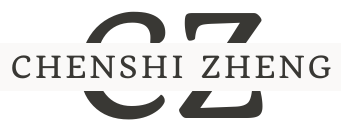In a world where change is the only constant, interconnected foresight emerges as the superhero we didn’t know we needed. Imagine being able to predict trends and challenges before they knock on your door, armed with insights that connect the dots in ways you never thought possible. It’s like having a crystal ball—only this one runs on data and a bit of good old-fashioned intuition.
Table of Contents
ToggleUnderstanding Interconnected Foresight
Interconnected foresight enables individuals and organizations to anticipate trends and challenges effectively. This approach involves synthesizing data and insights, allowing stakeholders to navigate complexity.
Definition and Key Concepts
Interconnected foresight refers to a strategic framework that analyzes various trends across multiple domains. It emphasizes the connections between social, economic, and technological factors. By doing this, organizations can identify potential disruptions and opportunities. Key concepts include systems thinking, which promotes understanding the broader context, and scenario planning, which prepares stakeholders for multiple future possibilities. Understanding these elements enhances decision-making and fosters resilience.
Historical Context and Development
The development of interconnected foresight stretches back several decades, evolving from traditional forecasting methods. Early pioneers in the field focused on specific sectors, lacking the comprehensive approach that defines it today. As global interdependencies grew, the need for a more integrated methodology emerged. The 1970s and 1980s marked significant advancements, as organizations began incorporating multidisciplinary insights into their planning processes. Technological advancements further accelerated this evolution, enabling real-time data analysis and facilitating collaborative foresight efforts. Today, interconnected foresight stands as an essential tool for adaptive planning.
Importance of Interconnected Foresight

Interconnected foresight holds significant value in today’s complex environment. It equips organizations with vital tools for navigating an unpredictable future.
Enhancing Strategic Planning
Strategic planning improves through interconnected foresight. By analyzing trends collectively, organizations identify opportunities and potential threats. This analysis allows decision-makers to create informed and adaptable strategies. Effective anticipation of change becomes possible, ensuring alignment with long-term goals. Organizations can prioritize resource allocation by understanding the interconnectedness of various factors. Comprehensive data synthesis enhances the overall strategic framework, leading to better outcomes.
Facilitating Collaboration Across Disciplines
Collaboration across disciplines flourishes with interconnected foresight. Different fields contribute unique insights that enhance overall understanding. Engaging with diverse expertise fosters a holistic view of current challenges. Stakeholders develop innovative solutions through shared knowledge and resources. This multidisciplinary approach improves resilience against unforeseen developments. Enhanced communication channels emerge, leading to stronger networks of collaboration. Ultimately, fostering teamwork enhances problem-solving capabilities across various sectors.
Methods and Tools for Interconnected Foresight
Understanding methods and tools for interconnected foresight enhances strategic planning and decision-making. These techniques equip organizations to better anticipate trends and adapt to future challenges.
Scenario Planning Techniques
Scenario planning plays a crucial role in preparing for various future possibilities. This approach encourages organizations to imagine multiple scenarios based on current data and emerging trends. Practitioners create detailed narratives outlining each scenario, which helps visualize potential challenges and opportunities. These narratives guide strategic discussions, ensuring teams consider diverse perspectives and outcomes. Implementing scenario planning cultivates flexibility, enabling organizations to pivot quickly if conditions change. Engaging in exercises that simulate scenarios sharpens foresight skills, enhancing overall adaptability.
Systems Thinking Approaches
Systems thinking fosters a comprehensive view of interconnected trends across different domains. By examining relationships between social, economic, and technological factors, organizations gain insights into complex systems. This holistic perspective aids in identifying leverage points that create maximum impact. Stakeholders benefit from integrating systems thinking into their analysis, promoting collaboration across disciplines. By recognizing interdependencies, they can anticipate ripple effects from changes in one area to another. Utilizing systems thinking ultimately enhances resilience, strengthening decision-making processes amid uncertainty.
Applications of Interconnected Foresight
Interconnected foresight finds diverse applications across sectors, enhancing strategic decision-making. Organizations leverage this framework to adapt to rapid changes and uncertainties.
Case Studies in Various Sectors
Examples highlight interconnected foresight’s effectiveness in various sectors. In healthcare, organizations utilize trend analysis to anticipate patient needs and improve care delivery. Retailers analyze consumer behavior patterns to optimize inventory and enhance customer experience. Financial institutions employ foresight methods to navigate market volatility, mitigating risks through informed strategies. Education systems integrate foresight to adjust curricula based on future job market demands, preparing students for emerging careers. Energy companies apply interconnected foresight to innovate sustainable practices and adapt to regulatory changes.
Cross-Industry Insights
Cross-industry collaborations illustrate interconnected foresight’s value. Insights from technology firms enhance manufacturing processes, demonstrating how data analytics can streamline operations. Additionally, environmental organizations share knowledge with urban planners, fostering sustainable city development. Automotive companies partner with tech startups to innovate mobility solutions that address climate change impacts. Financial services benefit from agile strategies inspired by practices in the retail sector, adapting to shifting consumer expectations. Each example emphasizes how interconnected foresight drives innovation and resilience in diverse fields.
Challenges and Limitations
Interconnected foresight faces several challenges that can hinder its effectiveness. Recognizing these limitations helps organizations navigate potential pitfalls.
Common Misconceptions
A widespread misconception involves thinking interconnected foresight guarantees precise predictions. Many believe that it functions like a crystal ball, offering absolute clarity on future trends. In reality, it provides insights based on current data and analysis rather than definitive outcomes. Another misunderstanding is the assumption that interconnected foresight applies exclusively to large organizations. Small and medium-sized enterprises also benefit significantly from integrating this approach into their strategic planning. Not everyone realizes that interconnected foresight requires continual adaptation and revising of strategies, as static models may quickly become outdated in a rapidly changing environment.
Addressing Resistance to Change
Resistance to change often emerges when implementing interconnected foresight. Many individuals and organizations may feel hesitant to adopt new frameworks due to fear of uncertainty. Addressing these concerns begins with effective communication, emphasizing the benefits of foresight in decision-making and planning. Gaining leadership buy-in proves vital, as supportive leaders can champion the integration of interconnected foresight within their teams. Providing training on tools and methods encourages widespread engagement and decreases apprehension. Clear success stories showcasing positive outcomes have also proven effective in demonstrating the value of interconnected foresight, making it easier for stakeholders to embrace the change.
Conclusion
Interconnected foresight stands as a vital asset for organizations navigating today’s complex landscape. By synthesizing diverse data and insights it empowers stakeholders to anticipate trends and challenges effectively. This strategic framework fosters collaboration and innovation across sectors enhancing resilience and adaptability.
As organizations embrace interconnected foresight they position themselves to respond proactively to emerging opportunities and threats. The integration of systems thinking and scenario planning further enriches decision-making processes. Ultimately the ability to foresee interconnected trends not only strengthens strategic planning but also cultivates a culture of continuous improvement and learning.




